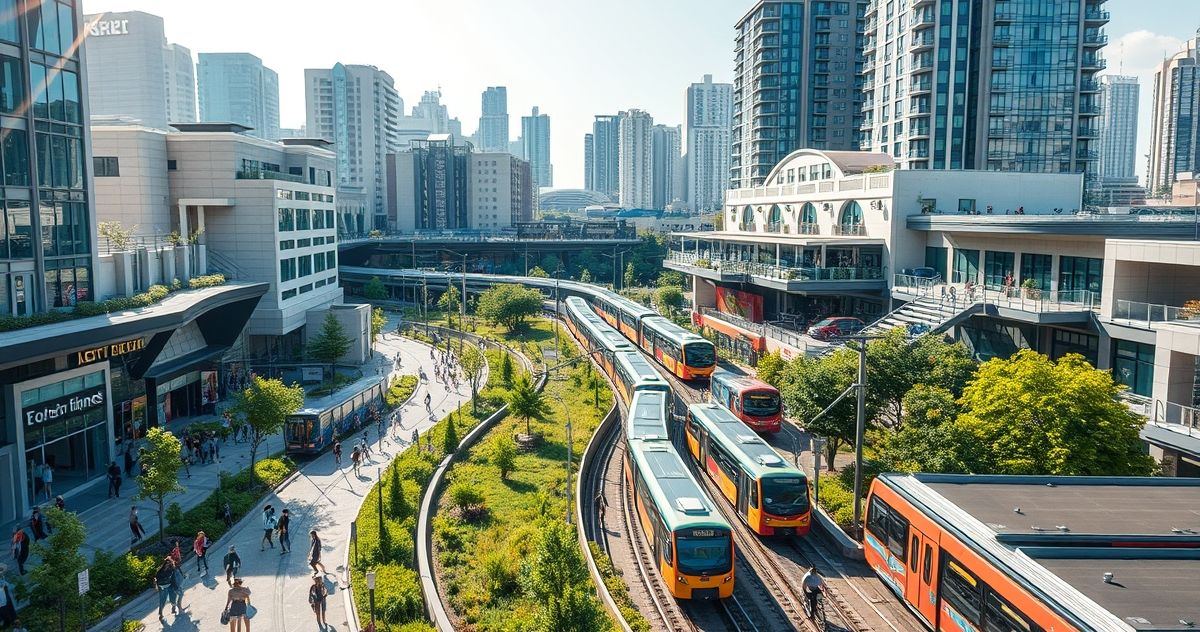State Transit Oriented Development Credit
The State Transit Oriented Development Credit is a strategic financial initiative aimed at fostering development in areas that are proximate to public transit facilities. This credit is designed to encourage developers and investors to prioritize projects within transit-served regions, resulting in intensified development, reduced dependency on vehicles, and enhanced community sustainability. By leveraging this credit, states seek to achieve smart growth, ultimately addressing the increasing demand for housing and business spaces near transport hubs.
Purpose of the State Transit Oriented Development Credit
The primary purpose of the State Transit Oriented Development Credit is to stimulate economic growth and urban development near existing or planned transit facilities. By incentivizing the use of this credit, the government aims to cultivate vibrant, walkable, and mixed-use communities. This initiative aligns with urban planning goals that focus on decreasing traffic congestion, improving air quality, and efficiently utilizing public transportation infrastructures.
Key Features or Components
- Eligibility Criteria: Typically, developers must propose projects situated within a specified distance from a transit facility. These projects may include residential, commercial, or mixed-use developments with the intent to enhance accessibility and community living.
- Credit Amount and Limitations: The credit amount often varies depending on the project size and type. States may impose a cap on the total credit available annually to control budget allocations and ensure equitable distribution among applicants.
- Application Process: Developers must submit detailed proposals outlining the scope, scale, and anticipated impact of the project. Documentation proving the project’s alignment with transit-oriented design principles is also essential.
- Project Completion Requirements: To claim the credit, projects often need to meet specific benchmarks or milestones within a defined timeline, ensuring progressive development and adherence to approved plans.
Relevant Filing or Compliance Requirements
Compliance with the State Transit Oriented Development Credit demands thorough knowledge of state-specific regulations and diligent adherence to application procedures. Key requirements include:
- Timely Registration: Developers must register their projects with the appropriate state tax authority prior to commencing construction to establish their eligibility for the credit.
- Documentation and Reporting: Periodic reports and documentation detailing project progress, expenditure, and adherence to transit-oriented principles are critical. This ensures compliance and facilitates the appropriate distribution of credits.
Penalties or Consequences for Non-Compliance
Failure to comply with the stipulations of the State Transit Oriented Development Credit can lead to significant repercussions:
- Forfeiture of Credit: Non-compliance with project timelines, reporting requirements, or design principles can result in forfeiture of the credit.
- Financial Penalties: States may impose penalties or interest charges on inappropriately claimed credits, impacting the financial viability of the development project.
Importance in Tax Resolution and Financial Compliance
The State Transit Oriented Development Credit plays a substantial role in urban development and planning as well as financial management for developers. By offering this incentive, states can attract more investment into transit-centric areas, reducing reliance on personal vehicles and promoting sustainable living alternatives. For developers, these credits provide a valuable financial tool for reducing tax liability, securing project financing, and enhancing overall project feasibility. Furthermore, the credit supports states in implementing broader environmental and urban planning initiatives, making it a cornerstone of coordinated development efforts.
This credit not only advances smart urban development strategies but also aids developers in achieving financial resilience. As a critical component of financial stewardship, understanding and appropriately leveraging the State Transit Oriented Development Credit can lead to successful project outcomes, proving beneficial for both communities and investors alike.

